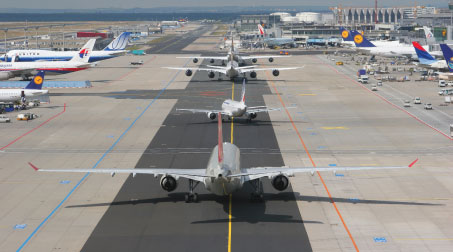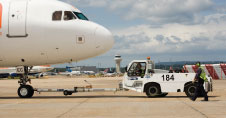
The European Commission plans to better monitor airport capacity developments at a European level, so as to seek alignment with air traffic management capacity and the objectives/plans of the Single European Sky.
European Commission Vice President responsible for Transport, Siim Kallas has been interacting with aviation industry stakeholders ever since he took office in early 2010, beginning with the volcanic ash shock and continuing with regularity ever since. The announcement of the Airport Package is a fundamental part of the work programme based on his vision for making aviation better for EU citizens.
First and foremost, airport capacity – the burning issue for Europe’s airport network – received some overdue political visibility. The EC communication within the Airport Package does much to recognise and underline the harsh reality and implications of the airport ‘capacity crunch’ for Europe’s medium to long term future, not just for aviation but for the economy as a whole. The European Commission plans to better monitor airport capacity developments at a European level, so as to seek alignment with air traffic management capacity and the objectives/plans of the Single European Sky. Most promisingly, the Commission will consider asking governments to devise national strategies on airport capacity, specifically addressing network implications. This amounts to an acknowledgement by the EC that there is not enough progress on this issue at a national level. In an ACI EUROPE reaction statement to the release of the Airport Package, Director General Olivier Jankovec said “Given what is at stake for Europe in relation to airport capacity and the paralysis which has struck many governments on this issue, there is no doubt that the European level needs to play a greater role.”
While all aviation stakeholders can agree on the need for more airport capacity, the other aspects of the Package’s announcement received mixed reactions from the various stakeholders around the table. A number of airlines do not like the proposed changes to the EU Regulation on Airport Slots. These include changing the use-it-or-lose-it rule from requiring 80% use of slots, to 85% use, as well as greater transparency on secondary trading of slots. Given that the original Regulation was based on established rules drawn up by incumbent airlines for incumbent airlines, airports are pleased that the proposed new Regulation is clearly focused on allowing more efficient use of available airport capacity.
Ground Handling is a particularly prominent part of the Airport Package. In the interest of quality at airports, there is an acknowledgement of the need for airport operators to be able to control and coordinate the different actors using their facilities, in particular ground handlers. Given how complex use of the airport space is today, this needs to be adequately addressed – as it is essential to driving increased performance in ground operations to the benefit of passengers and effectively contributing to the Single European Sky.

On the issue of aviation noise, the Package provides useful clarifications on the introduction of operating restrictions and the implementation of the balanced approach in Europe.
However, ACI EUROPE said that it was disappointed that the proposal does not provide adequate tools for the airport to enforce these minimum quality standards, in case of non-respect by a ground handler.
Also less positive is the proposal to further liberalise the ground handling market, in a manner which several stakeholders said is not sustainable. Having already undergone revolutionary liberalisation in the late 1990s, ground handling is now a market in which airport operators account for just 16%, so further liberalisation seems extreme, particularly with the potential redefinition of self-handling, which could have a very negative impact on service levels at regional airports in particular.
In fact ACI EUROPE, alongside its general response to the Airport Package, issued a joint statement with 3 of the 4 European Social Partners in the ground handling sector, warning of the adverse impact on operational inefficiencies and the undermining of the passenger experience. Jankovec commented “Any further deregulation at this stage will bring unintended consequences – not only reduced operational efficiency, but also dominant positions by larger incumbent airlines to the detriment of a truly competitive market.”
On the issue of aviation noise, the Package provides useful clarifications on the introduction of operating restrictions and the implementation of the balanced approach in Europe. However, ACI EUROPE is adamant that any new stringency level must be reasonable and still allow airlines to make the most of the economic life of their assets.
DELIVERY?

Ground Handling is a particularly prominent part of the Airport Package. In the interest of quality at airports, there is an acknowledgement of the need for airport operators to be able to control and coordinate the different actors using their facilities, in particular ground handlers.
So, now that the Package is out in the open, what’s next? The European Parliament has appointed rapporteurs and shadow rapporteurs for each of the various policy areas within the Airport Package and they will consult, research and write their respective reports in parallel to each other. Of course, ACI EUROPE has started liaising and engaging with these very important institutional stakeholders.
More concerning however is the approach of the Council of the European Union in advancing with the Airport Package. Currently, Denmark holds the Presidency of the EU and it is said to be politically disinterested in some aspects of the Package. Apparently, the Council’s focus is very much on the proposed changes to the legislation on ground handling. This risks potentially breaking up the Package into separate pieces of legislation on different timelines. In political terms, this would also reduce the momentum and dilute the impact of Vice-President Kallas’ vision for European airports.







